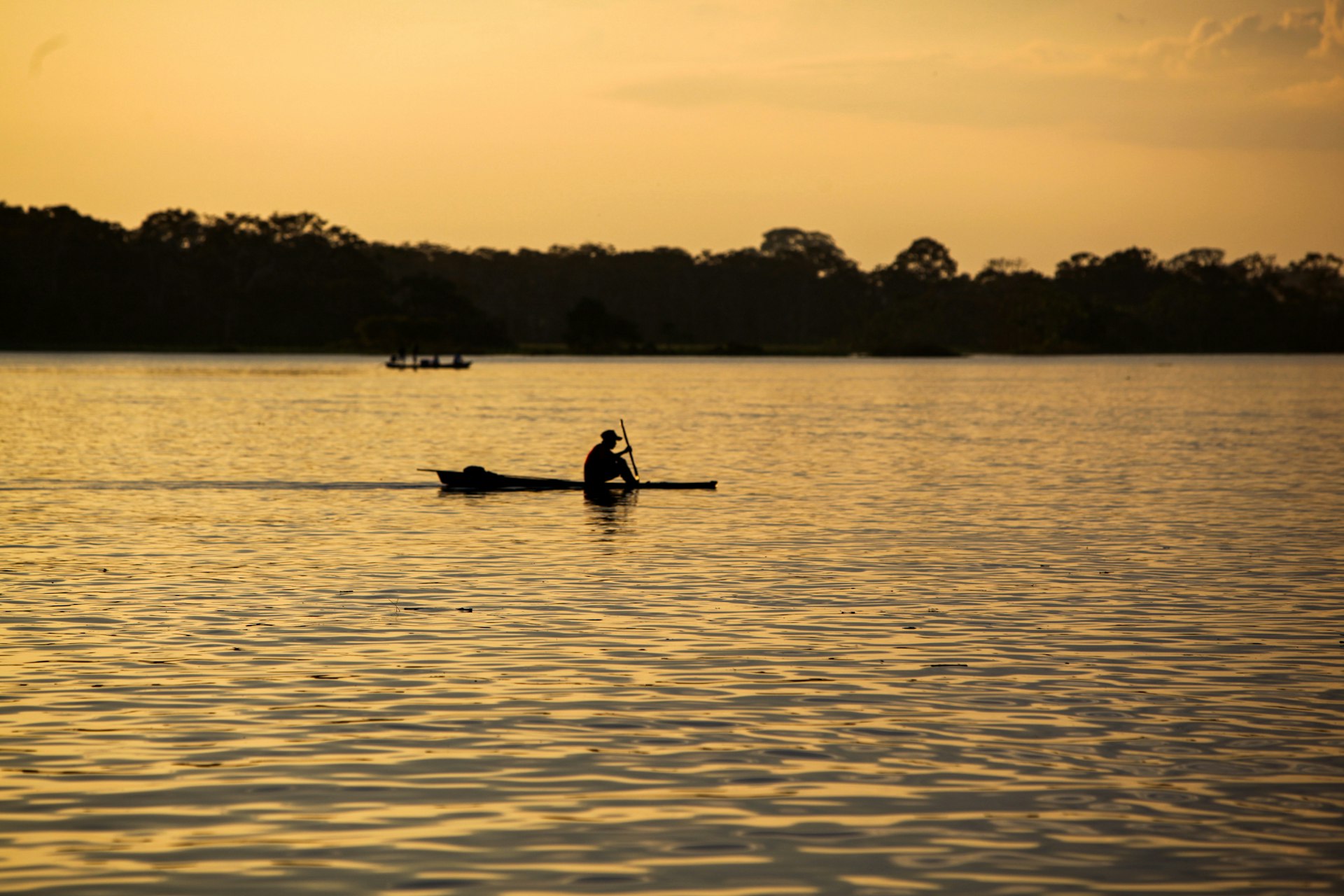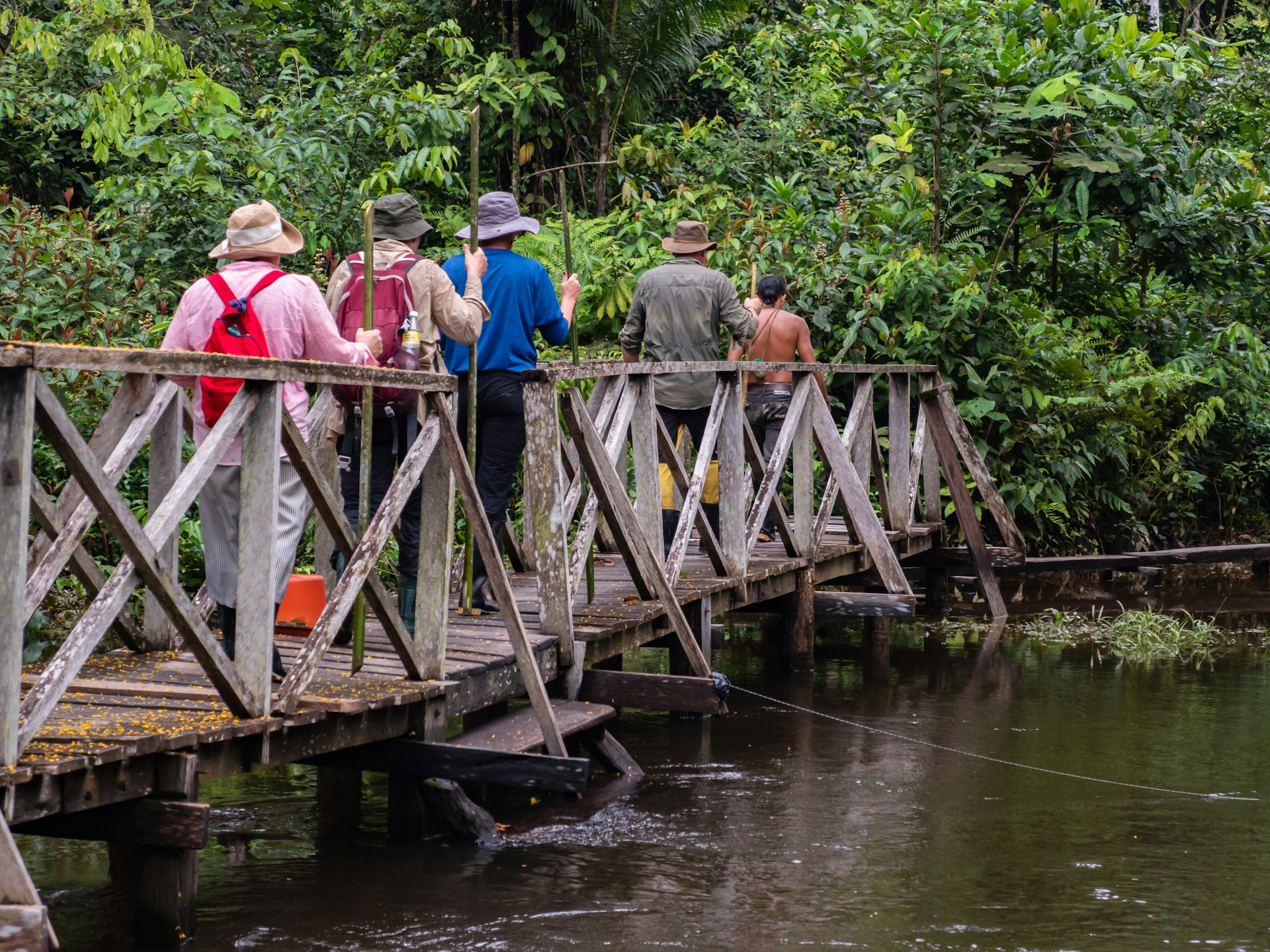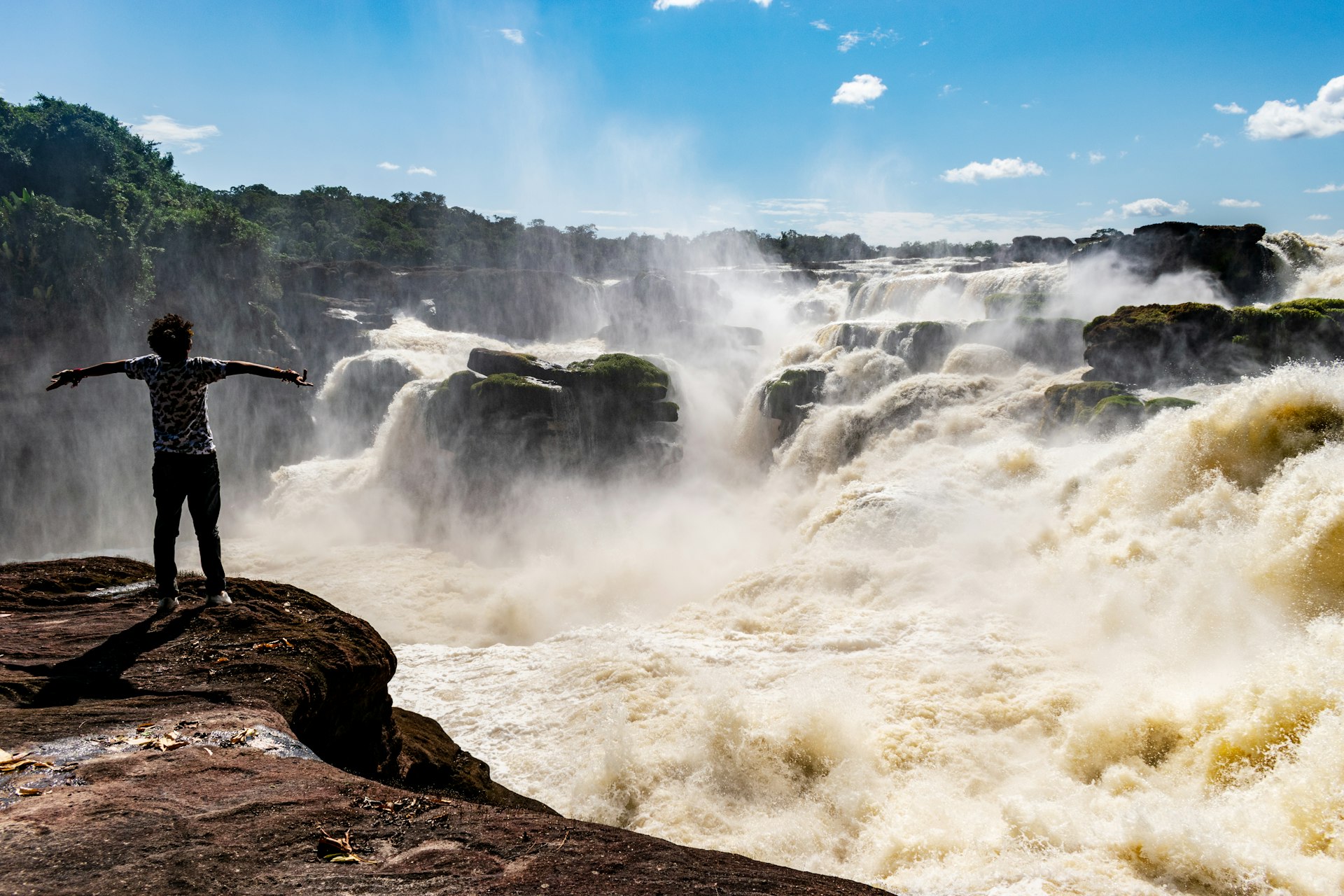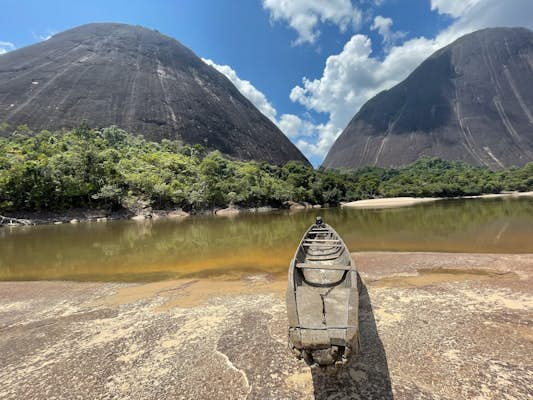Gazing at a map of Colombia, the vast swathes of greenery that make up the roadless Amazon region may seem like one homogenous mass of jungle, but that lack of detail has always drawn me to travel deep into the rainforest.
Despite making up 42% of Colombia’s landmass, the sparsely populated Amazonia receives very few visitors.
It spreads over six departments – Amazonas, Vaupes, Guainía, Guaviare, Caqueta and Putumayo– all of which offer intrepid travelers the chance to roll up their trouser legs and wade into a magical world of old-school travel experiences.
Moving around here is hot, tiring and requires a lot of planning, but the rewards are immense. From thundering waterfalls in the middle of the jungle to enormous rocks that protrude from the rainforest canopy and cave art featuring the handprints of long-lost civilizations, the Colombian Amazon is both a natural and cultural wonderland.
Here’s how to get off the beaten track and discover the best of this magnificent Colombian rainforest.

1. Pick your season
Wet or really wet
Needless to say, any destination within the world’s biggest rainforest gets its fair share of precipitation regardless of when you go. However the Colombian Amazon does have two marked seasons.
The dry season runs from June to November and is scorching hot, but it’s the best time for hiking under the jungle canopy with firm trails and less wetlands to cross.
Low water levels also reveal spectacular golden beaches backed by walls of brilliant green foliage that appear on the banks of many of the region’s major rivers.
The dry season is also great for wildlife watching – both forest and aquatic birds gather around shrinking water sources, butterflies are particularly active within the forest and larger mammals such as tapirs and otters make appearances on river banks.
The cooler wet season runs from December to May and sees rivers swell, lowland forests flood and lagoons fill, making it the best time to observe playful pink dolphins. It’s ideal for water-based exploration, whether paddling through flooded forests or venturing out onto mirror-like blackwater lakes.
2. Find a base
Fly into a regional hub
Almost the entirety of the Colombian Amazon remains blanketed in thick rainforest, and settlements are few and far between – choosing the right base for your adventure imperative.
Once you leave the limited road network leading into the Amazonia from the base of the Andes, there’s very little transport between towns in the region, with most passengers and goods arriving on direct flights from Bogotá.
Visiting several different areas of the Amazon on one trip is difficult. To maximize your time in the jungle, it’s best to fly directly to one of the departmental capitals from where you can visit surrounding attractions on shorter boat rides.
Major commercial airlines serve Leticia in the southern Amazon, which is a top spot for wildlife watching in nature reserves and on the lakes and tributaries of the mighty Río Amazonas.
Less developed destinations are reached with the goverment-run airline Satena and include Puerto Inírida, from where you can travel to the imposing rock formations of the Guayanese Shield and the wide waters of the Río Orinoco. Another option is Mitú, gateway to awe-inspiring waterfalls.
If your budget doesn’t allow for long flights and boat rides, you can get a taste of the Amazon in the departments of Guaviare, Caqueta and Putumayo on the western edge of the region, which are all accessible by bus from other major towns in the country.

3. Choose your comfort level
Luxurious lodge or cultural experience?
In remote areas, private nature lodges do their best to provide comfort in the jungle with elegant screened huts, good mattresses, satellite internet connections and gourmet meals. Once you book at a lodge, you’ll usually be required to organize all your activities through the hotel which, while easy, does limit flexibility.
Another option is to bunk down in a riverside Indigenous community; many have recently turned to tourism as a way to generate employment and keep young people from leaving to the city.
Quality varies greatly: the very best initiatives rival the nature lodges for comfort, while at others, getting a good night’s rest can be a challenge.
Staying in a community does have major advantages, however, with visitors free to wander around and experience traditional riverside life. It’s easy to organize hikes and boat trips at your own pace with knowledgeable local guides. Just be aware that residents are often reserved and it’s best to ask before snapping photos.
Due to the remote nature of the villages, many are not bookable online before departure, but local tour agencies in hub cities can usually call ahead to lock down a bed. A couple of well-run options can be found at Mocagua near Leticia or El Remanso below the Cerros de Mavecure.

4. Identify Appealing Attractions
From magical mountains to rushing rapids
Once on the ground, internet access ranges from very slow to non-existent, so it’s a good idea to research the attractions in the area before setting out.
Having a firm list of your must-sees makes it easier to work with boat operators once you arrive to design a journey that will hit all your selections without doubling back again and again.
Here are a few highlights in the region:
Cerros de Mavecure
These three enormous ancient rock monoliths rise unexpectedly from the lowland jungle beside the Río Inírida in Guainía. They are some of the oldest rock formations on the continent, and visitors can climb to the top of Cerro Mavecure for 360-degree views across the forest canopy.
Estrella Fluvial de Inírida
Take a boat ride from Inírida, the capital of Guainia department, to where the different colored waters of the Inírida, Guaviare and Atabapo Rivers flow into the mighty Orinoco, forming one of Colombia’s most important Ramsar wetlands.
Raudal de Jirijirimo
Perhaps the Colombian Amazon’s most awe-inspiring spectacle, these immense waterfalls on the Río Apaporis in Vaupes department, a 90-minute flight from Bogotá, are surrounded by impenetrable jungle and are only accessible by light aircraft.
Lago de Tarapoto
Watching pink dolphins jump playfully out of the placid waters of this pristine rainforest lake west of Leticia. It’s one of the Amazon’s most rewarding wildlife-watching experiences. The best time to see these wondrous creatures is in April and May when the lake is at its fullest.
5. Pack for the right conditions
Prepare for bugs and wild weather
Shops are lightly stocked in the jungle so you’ll want to bring essentials from home. If there’s one group of animals you’re guaranteed to encounter in abundance in the Amazon, it’s insects. You’ll need to bring good repellent – 20% picaridin works well – and a portable mosquito net also comes in handy.
Lightweight, impermeable clothing is a must. While you’re likely to spend most of your time in the region sweating profusely, it can get unexpectedly cold at night and heavy rains on hikes and boat trips will have unprepared travelers shivering.
And if you’re carrying electronic devices, you’ll want to bring a spare power pack (many villages don’t have constant electricity), a reliable dry bag (more for the rain than immersion) and some silica gel to soak up humidity for your electronic devices.
6. Get a group together
Personalize your rainforest tour
One of the biggest expenses when exploring the Amazon is boat travel. Fuel for outboard motors is bought in from a great distance and is much more expensive than elsewhere in the country.
Depending on how far you’re going, expect to spend at least US$200 per day for a motorized canoe. You can organize private boats once you arrive in the region through your accommodations or simply go down to town docks and negotiate with drivers.
Local tour operators sometimes organize collective day trips to nearby attractions, especially on weekends, but these tend to be crowded.
A better option is to get together with like-minded travelers and make your own itinerary so that you’re able to spend as long as you like at each stop. The price of a boat is usually the same irrespective of the number of passengers onboard, so it’s worth spending some time seeking out new friends to share the expense.
If you are unable to form a group and are on a tight budget you’ll need plenty of time. The cheapest way to get around is to hang out at the town dock and wait for a local supply boat that’s heading your way – although this may take days to materialize.
If I could do it all again…
I have made many trips from my home in the Colombian mountains down to the Amazon and after nearly every journey, I find myself wishing I had allocated more time.
Because I’m usually traveling on a budget, flexibility is key. On countless occasions I have had to pass up the chance to join unplanned trips to incredible destinations due to pre-booked return flights. Buying changeable flights or simply arriving on a one way ticket is a good way to ensure you’re free to go wherever the river takes you.

